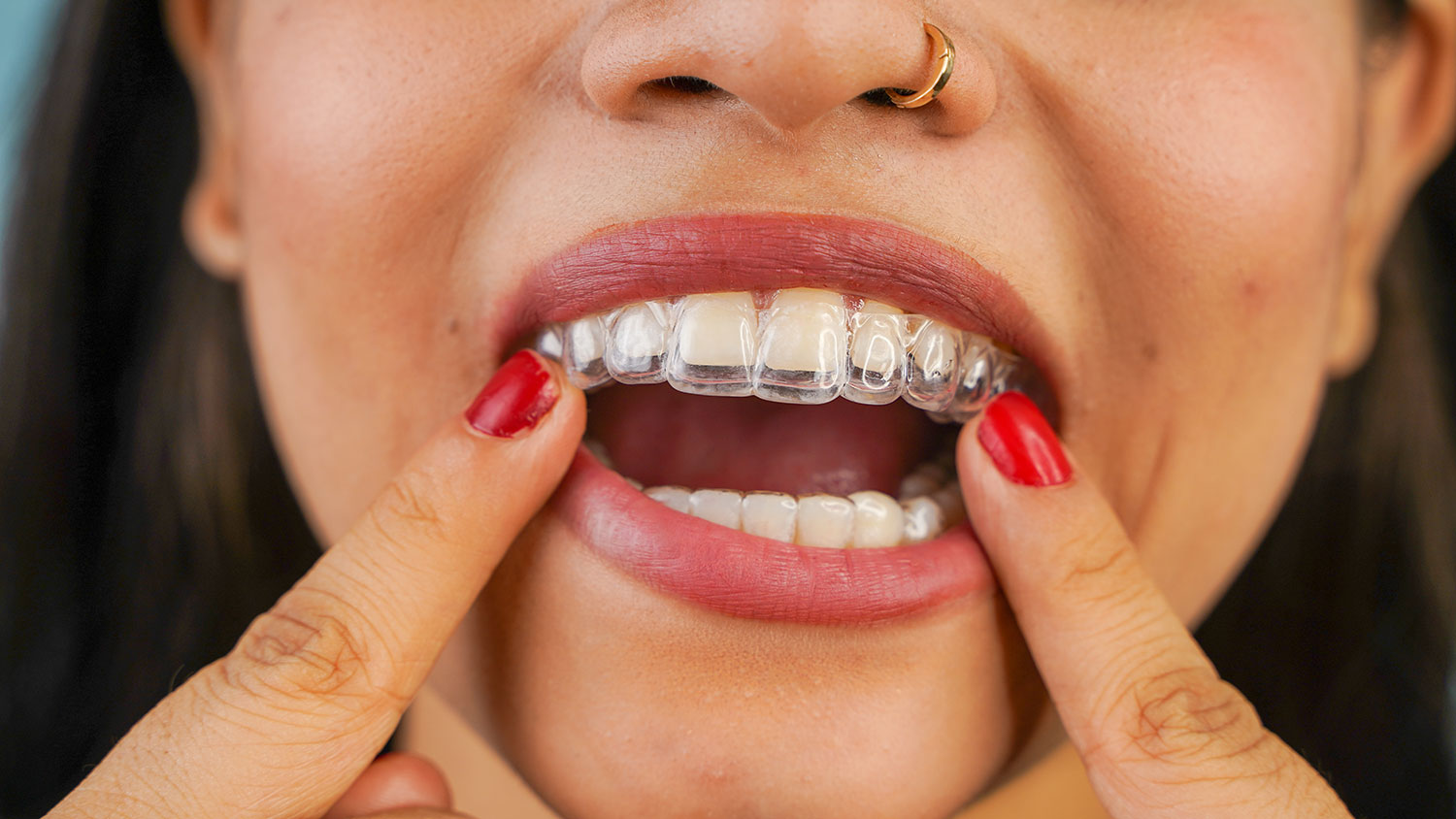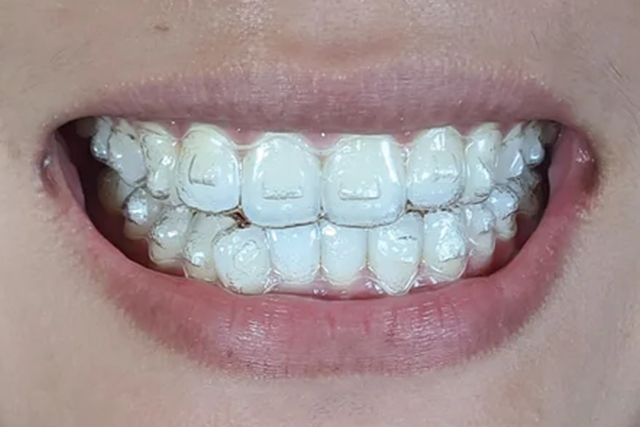Maintaining Oral Health While Using Invisalign: Tips for a Smooth Experience
Maintaining Oral Health While Using Invisalign: Tips for a Smooth Experience
Blog Article
Invisalign vs. Conventional Dental braces: Which Alternative Is Right for You?
When thinking about orthodontic therapy, the choice between Invisalign and typical braces presents several crucial variables that warrant cautious analysis. Invisalign offers a discreet option with detachable aligners, while typical dental braces provide an extra visible yet effective option for extreme imbalance.
Review of Treatment Choices

On the other hand, typical braces consist of metal braces and cords that are bonded to the teeth. This technique uses continual pressure in time to attain alignment. While effective for complicated orthodontic problems, typical dental braces require routine visits for modifications and can present obstacles in keeping dental health as a result of the difficulty of cleaning around wires and brackets.
Both options have their benefits, and the option commonly pivots on certain oral problems, way of life preferences, and patient compliance. Inevitably, speaking with an orthodontic professional is essential for figuring out the most suitable treatment strategy customized to private needs. Understanding the subtleties of each alternative can dramatically influence the overall success of orthodontic treatment.
Visual Considerations
A significant variable influencing the selection between Invisalign and typical braces is the visual appeal each treatment supplies. Invisalign aligners are crafted from clear plastic, making them practically unseen when used.
In comparison, conventional dental braces include metal braces and wires, which can be much more recognizable. While developments in orthodontic modern technology have resulted in the growth of smaller sized brackets and colored elastics, standard dental braces still maintain a more obvious account. For some individuals, the exposure of braces might hinder them from seeking required therapy.
Inevitably, the choice between Invisalign and standard dental braces might rest on personal choices regarding aesthetic appeals. People that focus on discernment typically favor Invisalign, while those that are much less worried regarding presence might choose traditional braces. Understanding the aesthetic implications of each option is essential for making a notified decision that straightens with one's way of life and choices.
Convenience and Convenience

In regards to comfort, Invisalign aligners are detachable, making it possible for people to appreciate their favorite foods without restriction and keep ideal dental hygiene. Brushing and flossing are simplified, as the aligners can be obtained during these regimens, whereas typical dental braces require cautious click resources maneuvering around cords and braces.
In comparison, traditional braces necessitate normal changes, making them less convenient for those with active routines. In general, the comfort and convenience of Invisalign make it an enticing selection for many people looking for orthodontic treatment.
Therapy Duration and Performance
While both Invisalign and standard dental braces are reliable in fixing dental imbalances, the duration of treatment can vary considerably in between the 2 alternatives. Commonly, Invisalign therapy can take anywhere from 12 to 18 months, depending on the intricacy of the situation. The clear aligners function by slowly changing teeth right into their wanted placements, and routine follow-ups with an orthodontist aid ensure progress remains on track.
On the other hand, standard braces frequently call for a longer commitment, typically varying from 18 months to 3 years. This is due to their fixed nature and using brackets and cables, which can be more reliable for serious misalignments and intricate cases (Invisalign). The therapy effectiveness of typical dental braces is well-documented, as they enable for exact changes and higher control over tooth motion
Ultimately, the option in between Invisalign and typical dental braces might hinge on both the expected treatment duration and the certain dental concerns available. Consulting with an orthodontist is critical, as they can give tailored referrals based upon private needs, guaranteeing the chosen approach lines up with preferred outcomes and durations.
Cost Contrast and Insurance Coverage Options
Cost plays a substantial function in the decision-making process for people taking into consideration orthodontic therapy, whether choosing for Invisalign or standard dental braces. On average, the cost of Invisalign varieties from $3,000 to $8,000, while traditional braces usually set you back between $2,000 and $6,000. Aspects affecting these prices include the complexity of the situation, the period of therapy, and geographical location.
Insurance insurance coverage can substantially influence out-of-pocket expenses. Lots of oral insurance coverage strategies provide partial protection for orthodontic treatments, however the click specifics can differ extensively. It is crucial for individuals to examine their insurance plan to identify the degree of coverage for either option. Typically, typical dental braces might be extra frequently covered by insurance policy plans contrasted to Invisalign, which some insurance firms classify as a cosmetic procedure.
In addition, a number of orthodontic methods provide flexible layaway plan, making both therapy choices much more available. Clients should inquire regarding possible financing choices and price cuts for upfront repayments. Evaluating the complete cost, including insurance policy advantages and payment strategies, is important for making an informed decision that lines up with both visual preferences and budget considerations.

Verdict
In recap, the option between Invisalign and typical dental braces rests on several elements, consisting of aesthetic additional hints preferences, comfort, therapy duration, and expense. Invisalign provides a discreet, removable option that facilitates dental health and nutritional versatility, while conventional dental braces might be preferable for intricate oral problems and usually come with a reduced rate factor. Eventually, examination with an orthodontist is important to assess private situations and establish the most proper therapy alternative for achieving optimum oral positioning.
When considering orthodontic treatment, the option between Invisalign and conventional dental braces provides several important aspects that merit cautious assessment.Comparing Invisalign and standard dental braces exposes unique therapy options for orthodontic adjustment.While both Invisalign and standard dental braces are efficient in dealing with dental imbalances, the period of treatment can differ dramatically in between the two choices.Expense plays a considerable role in the decision-making process for individuals thinking about orthodontic therapy, whether choosing for Invisalign or traditional dental braces.In recap, the selection in between Invisalign and conventional braces hinges on multiple elements, including aesthetic choices, convenience, treatment duration, and price.
Report this page